A Separation Agreement is a legal document that outlines the terms and conditions of a separation between partners, whether married or not. It serves as a written record of the agreed-upon arrangements regarding issues such as property division, spousal support, and child custody.
The agreement helps to reduce conflict and uncertainty during the separation process and provides a clear understanding of each party’s rights and responsibilities. The use of a Separation Agreement is an alternative to the traditional court process for resolving disputes and can be a faster, more cost-effective solution.
Table of Contents
Separation Agreement Templates
Navigate the process of separation or divorce with clarity and peace of mind using our comprehensive collection of Separation Agreement Templates. These customizable and printable templates provide a legally binding framework for couples to outline the terms and conditions of their separation or divorce. Our templates cover essential aspects such as division of assets, child custody and support, spousal support, and any other relevant agreements.
By utilizing our Separation Agreement Templates, you can ensure a fair and amicable separation, protect your rights and interests, and minimize potential conflicts. Streamline the legal process, maintain open communication, and establish a solid foundation for a new chapter in your lives. Download our Separation Agreement Templates now and confidently navigate the complexities of separation or divorce.
Why should I have a separation agreement?

A Separation Agreement can be beneficial for several reasons:
Provides clarity and structure: A Separation Agreement outlines the terms and conditions of a separation, providing clarity and structure to the process.
Resolves disputes: The agreement can help to resolve disputes between partners by clearly defining their rights and responsibilities.
Avoids court: A Separation Agreement can be a faster and less expensive alternative to the traditional court process for resolving disputes.
Protects legal rights: A Separation Agreement is a legally binding document that protects the rights of both parties.
Facilitates future negotiations: The agreement serves as a written record of the terms and conditions of the separation, which can facilitate future negotiations if necessary.
Supports a peaceful separation: A Separation Agreement can help to reduce conflict and promote a peaceful separation between partners.
What are the benefits of a separation agreement?
A Separation Agreement can provide several benefits, including:
Clarity and structure: It outlines the terms and conditions of the separation, providing clarity and structure to the process.
Resolved disputes: The agreement can help resolve disputes between partners by clearly defining their rights and responsibilities.
Avoidance of court: A Separation Agreement can be a faster and less expensive alternative to the traditional court process for resolving disputes.
Legal protection: The agreement is a legally binding document that protects the rights of both partners.
Future reference: The agreement serves as a written record of the terms and conditions of the separation, which can be used as reference in future negotiations if necessary.
Peaceful separation: A Separation Agreement can help to reduce conflict and promote a peaceful separation between partners.
Eased transition: A well-drafted Separation Agreement can make the transition to separate living arrangements smoother and less stressful for all parties involved.
What should a separation agreement include?
A Separation Agreement typically includes provisions regarding the following issues:
Property division: The agreement outlines how the couple’s assets and debts will be divided.
Spousal support: The agreement may include provisions regarding alimony or spousal support.
Child custody and support: The agreement should include provisions regarding the custody and support of any children.
Parenting plan: The agreement may include a detailed parenting plan that outlines the responsibilities of each parent.
Debt and liability allocation: The agreement should include provisions regarding who is responsible for paying debts and liabilities incurred during the relationship.
Communication: The agreement may include provisions regarding how the parties will communicate with each other, especially in regards to the children.
Future changes: The agreement should include provisions for modifying the agreement in the future if necessary.
It’s important to keep in mind that the provisions included in a Separation Agreement will vary depending on the specific circumstances of each case. It’s recommended to consult with an attorney to ensure that all important issues are addressed and to ensure the agreement is legally binding.
Types of separation agreement
There are two main types of Separation Agreements:
Mutual Separation Agreement: A Mutual Separation Agreement is an agreement between two partners who have mutually decided to separate. This type of agreement outlines the terms and conditions of the separation, including property division, spousal support, and child custody arrangements.
Court-Ordered Separation Agreement: A Court-Ordered Separation Agreement is a separation agreement that is ordered by a court. This type of agreement is usually used in situations where the parties are unable to reach a mutually acceptable agreement on their own. The court will consider the circumstances of the case and make a decision based on the best interests of all parties involved.
Regardless of the type of Separation Agreement, it’s important that it is legally binding and enforceable in order to protect the rights of all parties involved. A Separation Agreement should be carefully drafted with the assistance of a qualified attorney to ensure that it is comprehensive, accurate, and meets the specific needs of the parties involved.
How to create your separation agreement
Creating a Separation Agreement can be a complex process, but the following steps can help guide you through the process:
Gather information
Collect information about your assets, debts, income, expenses, and any other financial information that will be relevant to the agreement. This includes information about property, bank accounts, investments, and other assets, as well as debts such as mortgages, loans, and credit card balances.
Determine your priorities
Consider what is most important to you in terms of property division, spousal support, and child custody arrangements. This will help you determine your negotiating position and ensure that your Separation Agreement reflects your priorities.
Seek legal advice
Consult with an experienced family law attorney to ensure that you understand the legal implications of a Separation Agreement and that your rights are protected. An attorney can also assist in drafting a comprehensive agreement that meets your specific needs and complies with state laws.
Negotiate the terms
Work with your partner to negotiate the terms of the agreement. This may involve compromise on both sides to reach a mutually acceptable agreement. If you are unable to reach an agreement, consider mediation or alternative dispute resolution methods.
Draft the agreement
Have your attorney draft the Separation Agreement based on the terms that have been negotiated. The agreement should include detailed provisions regarding property division, spousal support, child custody and support, and any other relevant issues.
Review and sign
Carefully review the agreement to ensure that it accurately reflects the terms that have been negotiated. If necessary, have your attorney review the agreement and make any necessary changes. Once the agreement is final, both parties should sign it and have it notarized.
File the agreement
The Separation Agreement should be filed with the court if necessary. In some states, a Separation Agreement is not legally binding unless it is approved by a court.
It’s important to keep in mind that the process of creating a Separation Agreement can be complex and emotional, and the terms of the agreement will have a significant impact on your future. It’s recommended to seek the advice of a qualified attorney to ensure that your rights are protected and that the agreement meets your specific needs.
FAQs
Can a Separation Agreement be changed?
A Separation Agreement can be modified in the future if necessary, but only if both parties agree to the changes. If the parties are unable to reach a mutually acceptable agreement, the court may be asked to modify the agreement.
What happens if one party violates the terms of the Separation Agreement?
If one party violates the terms of the Separation Agreement, the other party may take legal action to enforce the agreement. This may involve seeking a court order or seeking damages for breach of contract.
Do I need an attorney to create a Separation Agreement?
While it is not required, it is recommended to seek the advice of a qualified attorney when creating a Separation Agreement. An attorney can assist in drafting a comprehensive agreement that meets your specific needs and complies with state laws.
What if I can’t afford an attorney?
If you can’t afford an attorney, there are alternative options such as pro bono legal services, legal aid organizations, or using online legal documents services. However, it’s important to keep in mind that these options may have limitations and may not provide the same level of protection as working with an experienced attorney.
What happens to the Separation Agreement if I get divorced?
A Separation Agreement is typically merged into the final divorce decree and becomes part of the court’s order. The terms of the agreement will then be legally binding and enforceable as part of the divorce decree.
What if my spouse refuses to sign the Separation Agreement?
If your spouse refuses to sign the Separation Agreement, you may consider negotiating the terms or seeking mediation to resolve any disputes. If negotiations fail, you may need to go to court to obtain a divorce or legal separation.
What is the difference between a Separation Agreement and a divorce decree?
A Separation Agreement is a legal contract between two partners that outlines the terms and conditions of their separation. A divorce decree is a court order that officially terminates a marriage and resolves all legal issues, including property division, spousal support, and child custody.
Do I need a Separation Agreement if I am already separated from my spouse?
While it is not required, a Separation Agreement can provide a clear and legally binding understanding of the terms and conditions of your separation. This can help avoid misunderstandings and disputes in the future.
What if the Separation Agreement is not fair or equitable?
If you believe that the Separation Agreement is not fair or equitable, you may seek to have the agreement modified or seek legal advice to challenge the agreement in court.
What happens if I move to another state after signing a Separation Agreement?
A Separation Agreement may still be legally binding even if you move to another state. However, the terms of the agreement may be affected by the laws of the new state, so it’s important to seek legal advice if you are considering a move.
Can a Separation Agreement cover issues related to pets?
Yes, a Separation Agreement can cover issues related to pets, including who will have custody of the pet, who will be responsible for its care and expenses, and any other relevant issues.














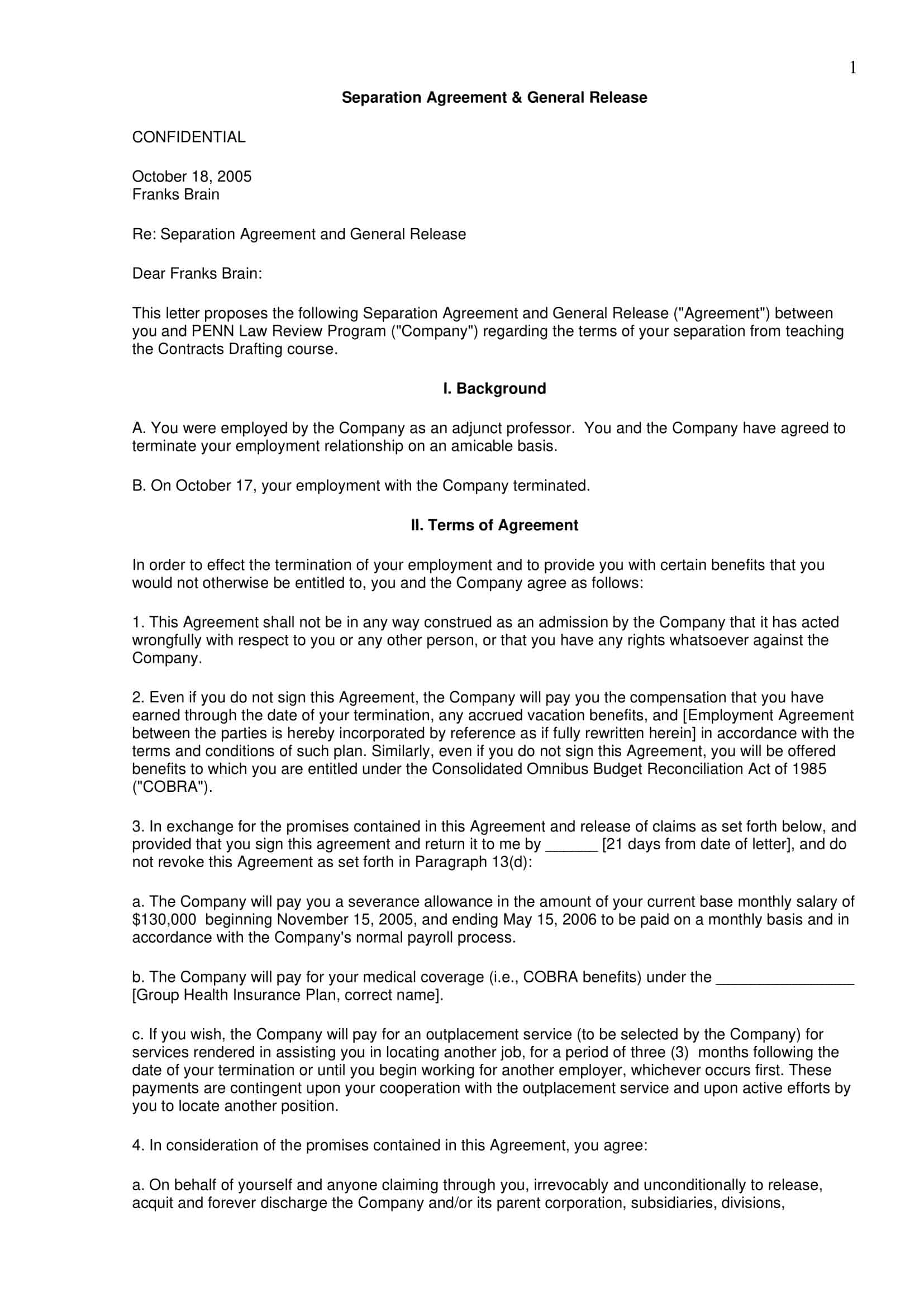


















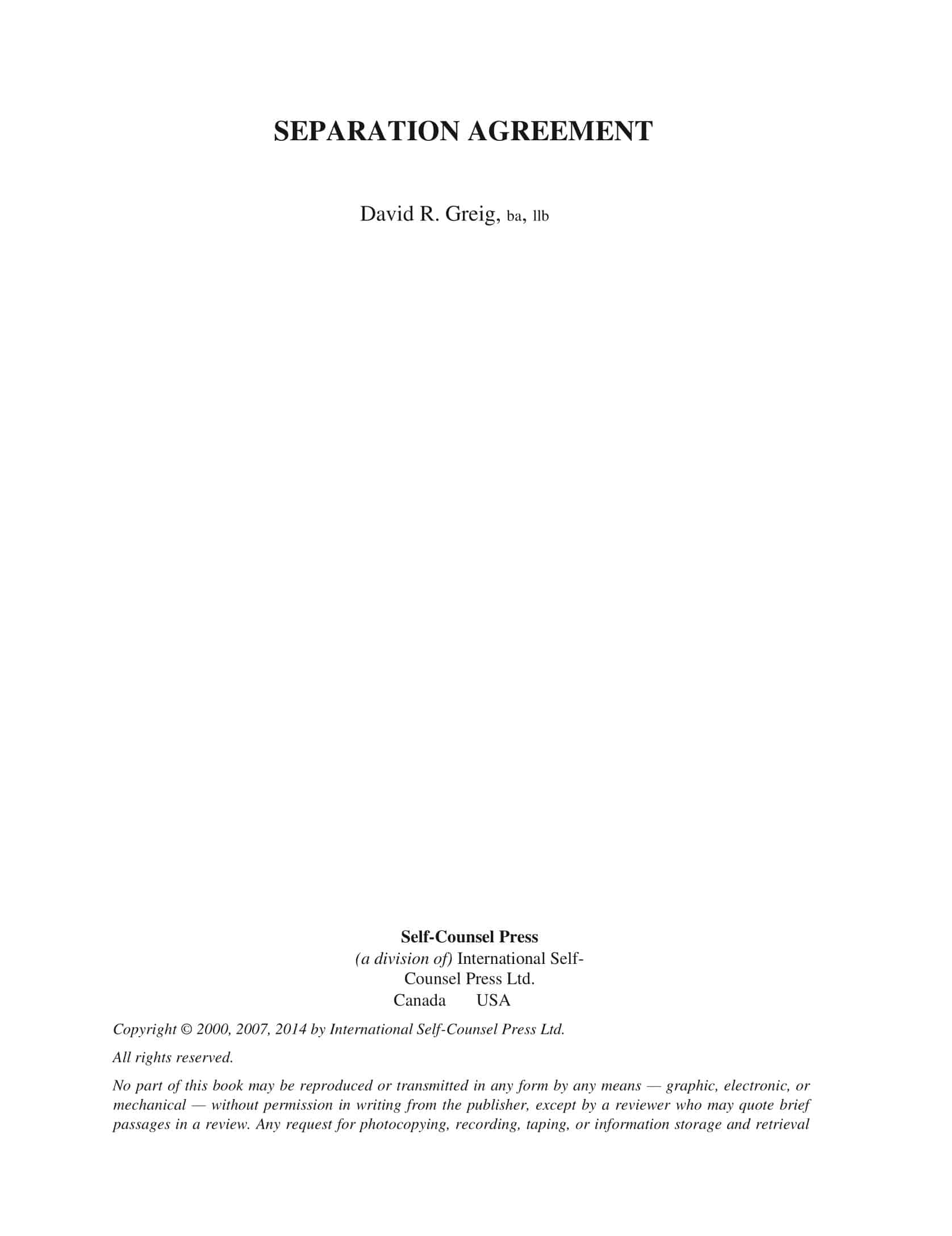

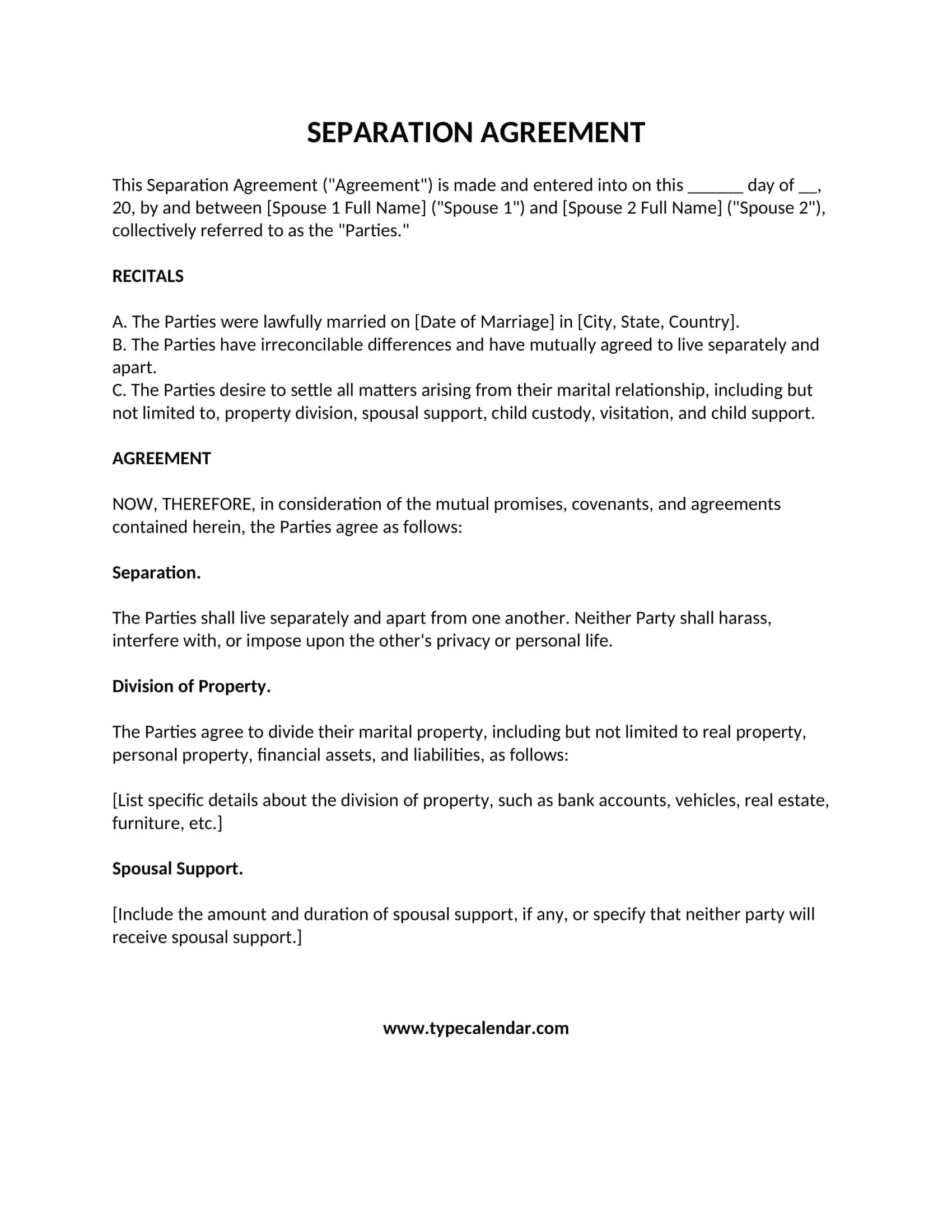



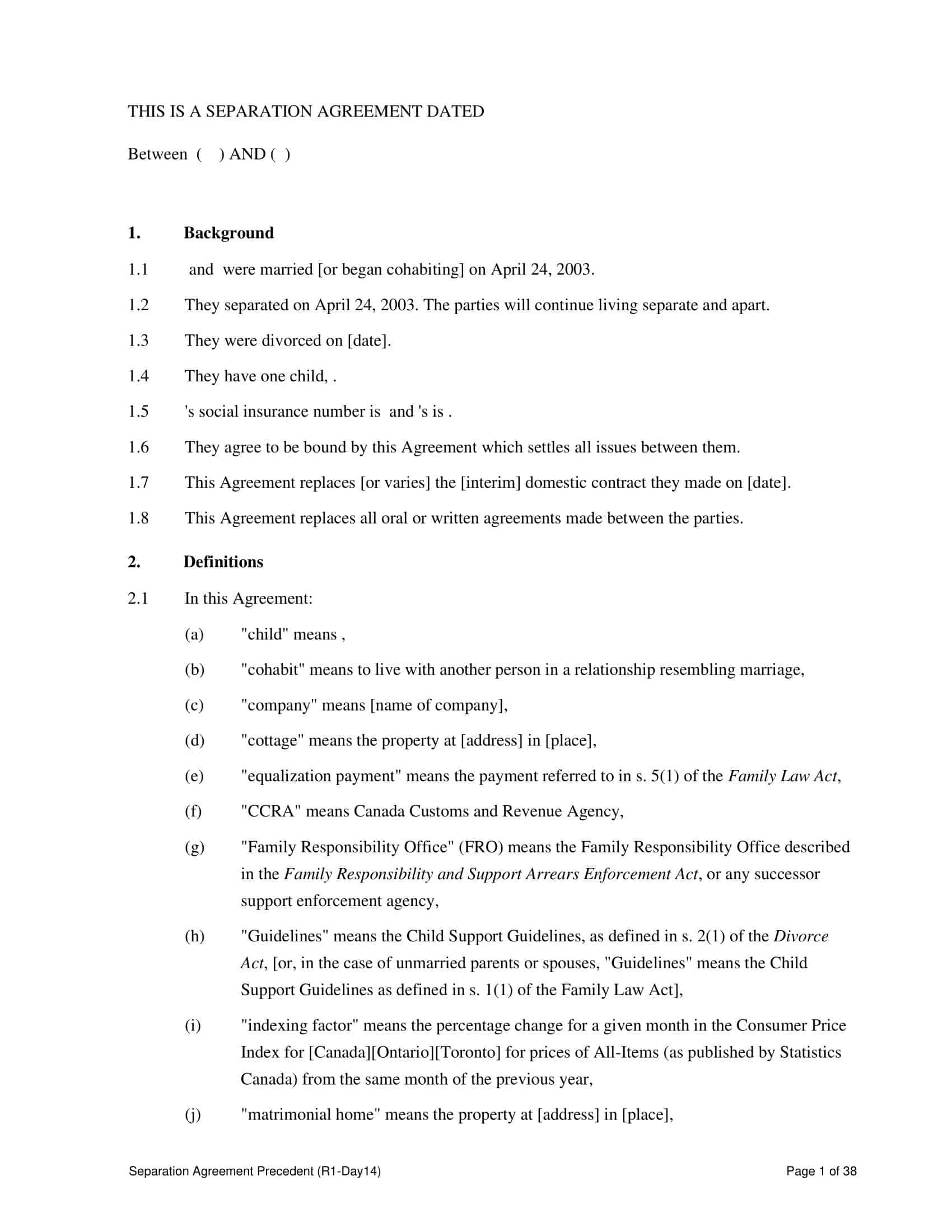




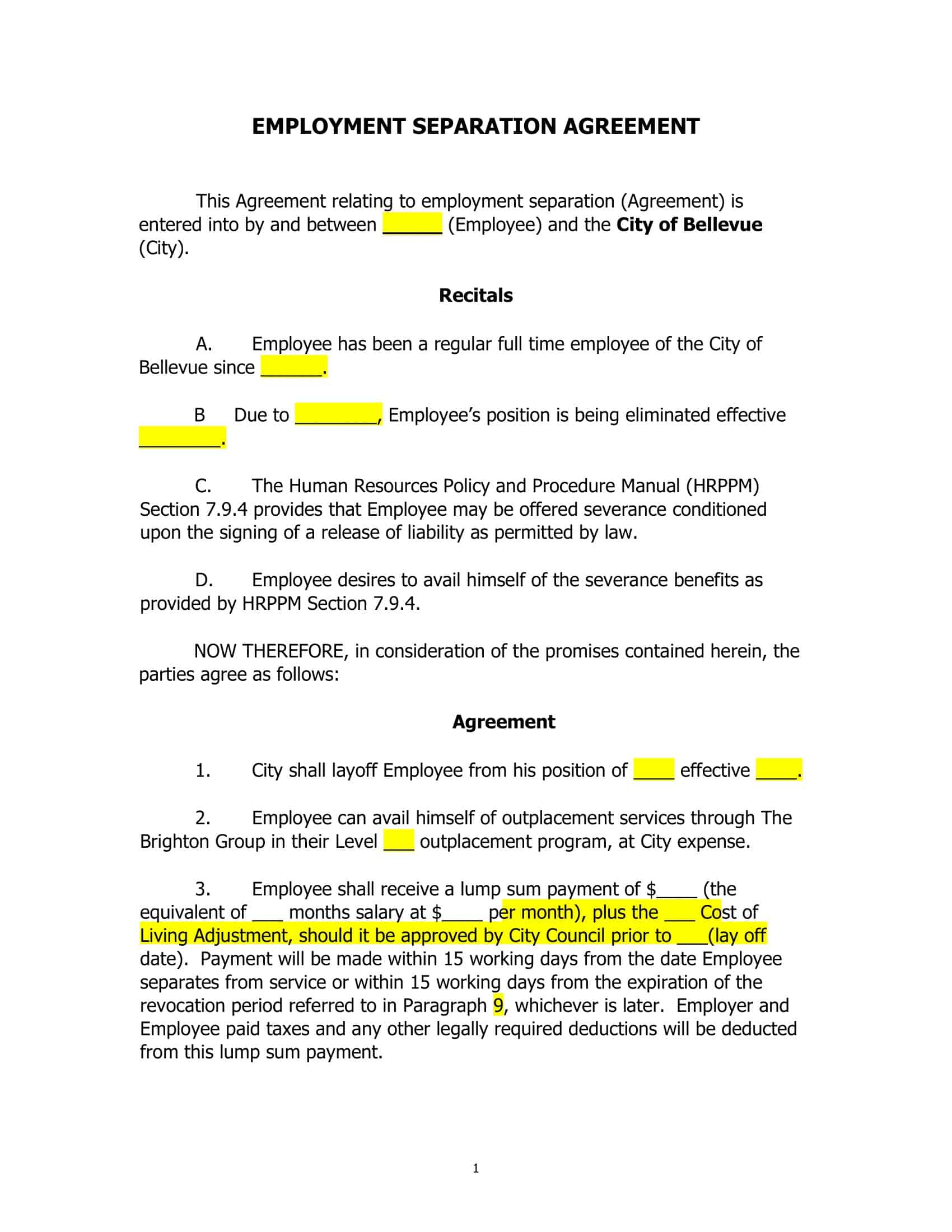
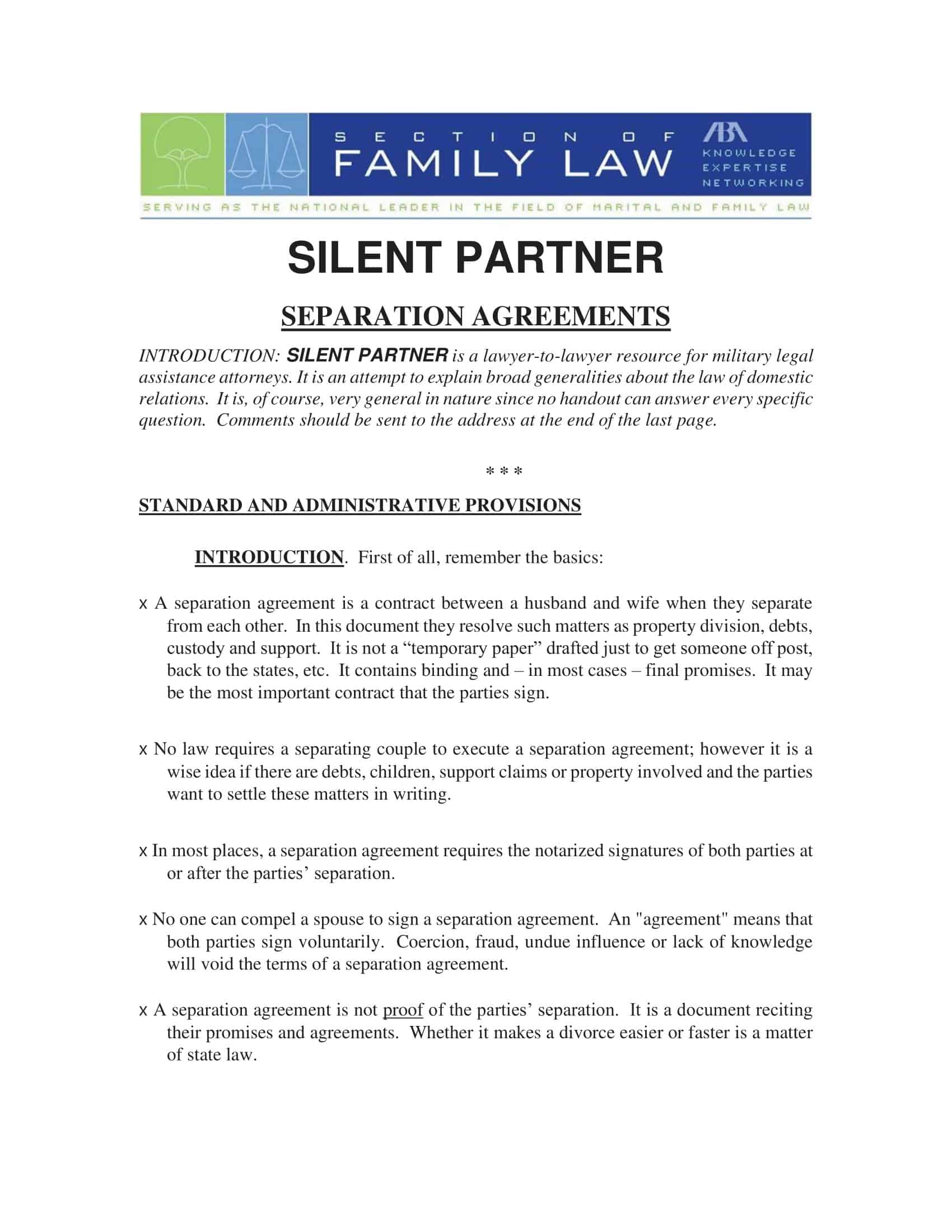



![Free Printable Roommate Agreement Templates [Word, PDF] 1 Roommate Agreement](https://www.typecalendar.com/wp-content/uploads/2023/06/Roommate-Agreement-150x150.jpg)
![Free Printable Payment Agreement Templates [PDF, Word] 2 Payment Agreement](https://www.typecalendar.com/wp-content/uploads/2023/05/Payment-Agreement-1-150x150.jpg)
![Free Printable Indemnification Agreement Templates [PDF, Word] Hold Harmless 3 Indemnification Agreement](https://www.typecalendar.com/wp-content/uploads/2023/05/Indemnification-Agreement-150x150.jpg)
